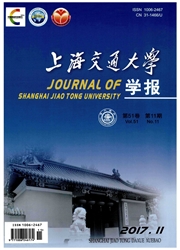

 中文摘要:
中文摘要:
为了揭示"热变形—位错密度—动态再结晶—流动应力"之间的关联机制,采用元胞自动机方法定量模拟了镁合金AZ31B高温流动应力与动态再结晶微观组织演化行为.以初始微观组织和热力加工参数为输入量,位错密度为关键内变量模拟热变形过程中加工硬化、动态回复、动态再结晶形核和晶粒长大等微观组织演化过程,同时通过位错密度的统计平均值计算了宏观流动应力.结果表明:动态再结晶启动后位错密度分布呈现高度不均匀性,但其统计平均值曲线与流动应力曲线一致,呈现典型的动态再结晶特征;热力加工参数通过改变位错密度累积速度影响动态再结晶形核和长大行为;动态再结晶演化反过来又改变了材料位错密度分布进而影响后续的动态再结晶行为,导致材料流动应力发生变化.
 英文摘要:
英文摘要:
To reveal the correlation among hot deformation,dislocation density,dynamic recrystallization(DRX)and flow stress,a cellular automata(CA)method is developed to quantitatively simulate the flow stress and microstructural evolution for magnesium alloy AZ31 B.Initial microstructure and thermo-mechanical parameters are taken as input data to the CA model.Dislocation density is used as a crucial variable to illustrate the effects of work hardening,dynamic recovery and DRX.The flow stress is calculated from the mean value of dislocation density.It is shown that dislocation density is non-uniformly distributed after the start-up of DRX,but its mean value increases to the peak and then drops slowly to a steady state value.Thermo-mechanical parameters influence the DRX behavior by changing the accumulative rate of dislocation density,and DRX behavior alters the distribution of dislocation density as well as the high-temperature flow stress.
 同期刊论文项目
同期刊论文项目
 同项目期刊论文
同项目期刊论文
 期刊信息
期刊信息
